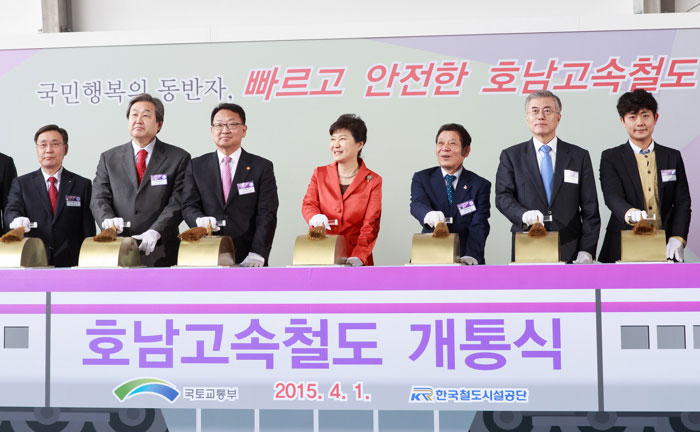
President Park Geun-hye (fourth from right) celebrates the opening of the Honam High Speed Railway on April 1.
The Honam High Speed Railway officially begins service on April 2. After a six-year construction period, a high-speed railroad that can run at speeds of up to 300 kilometers per hour will finally be in operation. It has been 101 years since the original Honam Line was built in 1914, and 11 years since the Gyeongbu high-speed railway began service in 2004. Thanks to this new railway, the Honam and Chungcheong regions will come within a quarter-of-a-day by train of Seoul.
The newly opened 182.3-kilometer railway links Osong Station in Chuncheongbuk-do (North Chungcheong Province), Gongju Station in Chuncheongnam-do (South Chungcheong Province), Iksan and Jeongeup stations in Jeollabuk-do (North Jeolla Province) and Songjeong Station in Gwangju in Jeollanam-do (South Jeolla Province). This large-scale state construction project cost upwards of KRW 8.4 trillion. It was undertaken, however, to support the economic revitalization of the Chungcheong and Honam areas, both of which have had less investment in infrastructure than in other regions of the country, and to pursue a more balanced development of the nation.
“When the Honam Line first opened, it took more than 12 hours to travel between Seoul and Gwangju, one-way. Thanks to this new railway, however, it has been reduced to just 90 minutes. The Honam High Speed Railway marks a milestone in the development of the regional economy, too, by boosting the ease with which social & cultural exchanges and cooperation can take place,” she said.
The president said that, “The opening of this new railway will enrich the lifestyles and the ideas & values of the people. It will enable more people to enjoy and share the beautiful environment, the cuisine with various local specialties and the traditions & the heritage assets across the Honam area.”
President Park also said, “I hope the Honam High Speed Railway will become a catalyst to help Korea’s railway industry penetrate overseas markets. We now need to go further for a grander future by crossing the ceasefire line at the DMZ and become connected to the Trans-Asia Railway network.”
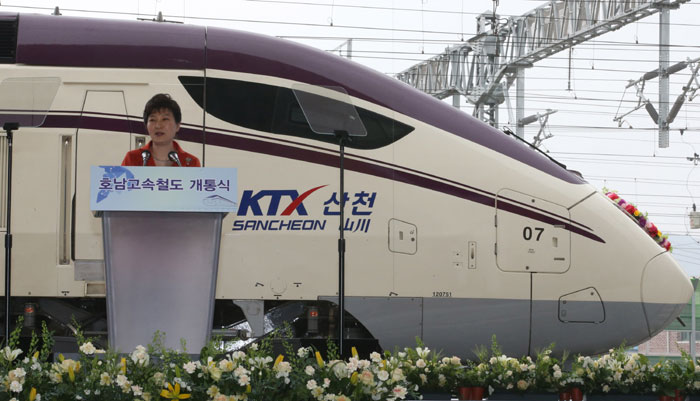
President Park Geun-hye says that, 'The Honam High Speed Railway will help to remarkably develop the local economy and will vitalize social cooperation and cultural exchanges in order to mark a milestone toward achieving a balanced development of the country.’
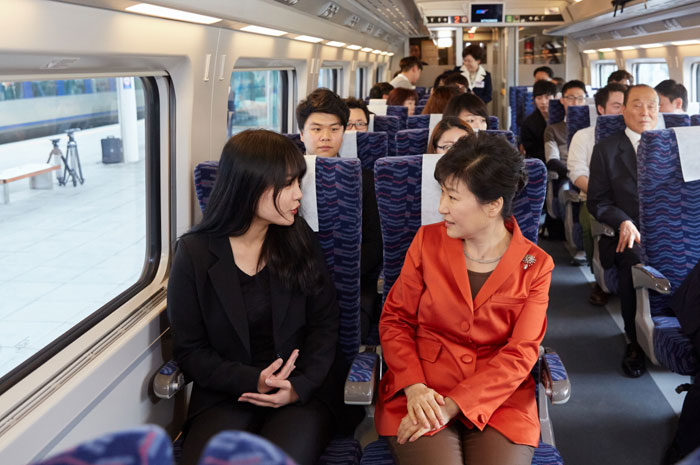
President Park Geun-hye (right) talks with a passenger on the newly inaugurated Honam High Speed Railway.
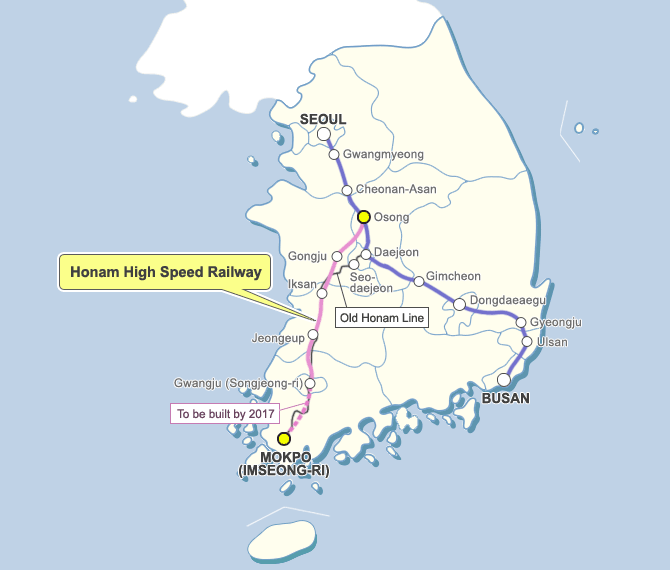
A map of the Honam High Speed Railway
Prior to the ceremony, President Park attended a meeting on the Gwangju Summer Universiade 2015 at the Kim Dae-jung Convention Center. She emphasized the importance of government support, cooperation among local government organizations and the active participation of local residents in order to ensure a successful Universiade. She urged the organizing committee to, “review thoroughly so that there will be flawless safety management and operations."
The Gwangju Summer Universiade will be held from July 3 to 14 around Gwangju City. Young athletes from about 170 countries are to participate, showing off their sporting prowess. For the smooth transport of the athletes and for the convenience of visitors to the upcoming sporting event, the Ministry of Land, Infrastructure and Transport decided to allocate more trains to the Honam High-Speed Railway.
On the same day, President Park visited the Jeonnam-Naju Innovation City and delivered words of encouragement to the staff there. The state-funded project aims to shift 154 public organizations to ten regions across the country in order to develop the selected areas into centers of local development. Currently, 13 public organizations have moved to Naju in Jeollanam-do.
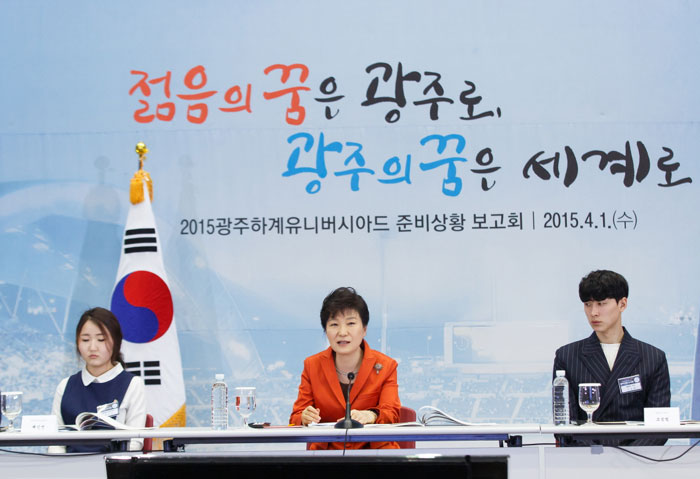
President Park Geun-hye (center) leads a meeting of the Gwangju Summer Universiade Organizing Committee.
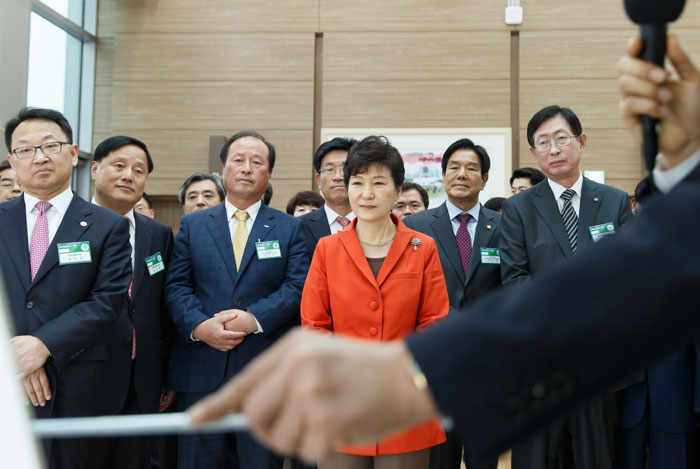
President Park Geun-hye (second from right) looks around the Jeonnam-Naju Innovation City in Naju City, Jeollanam-do (South Jeolla Province).
By Yoon Sojung
Korea.net Staff Writer
Photos: Cheong Wa Dae, Yonhap News
arete@korea.kr